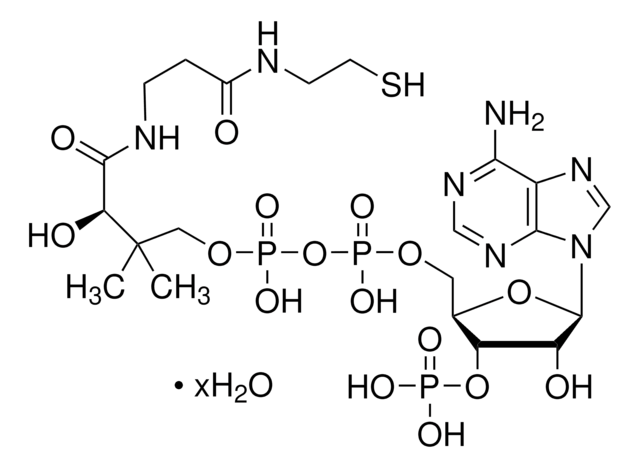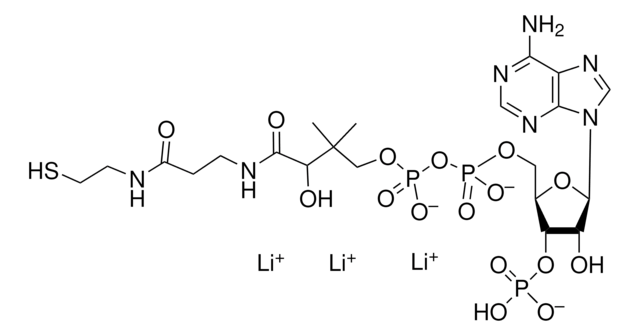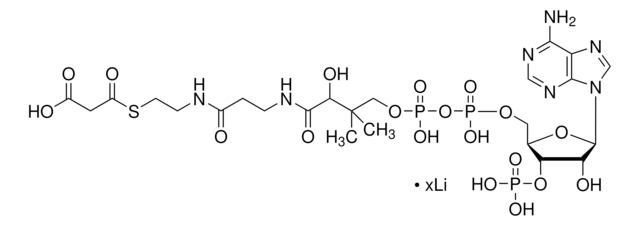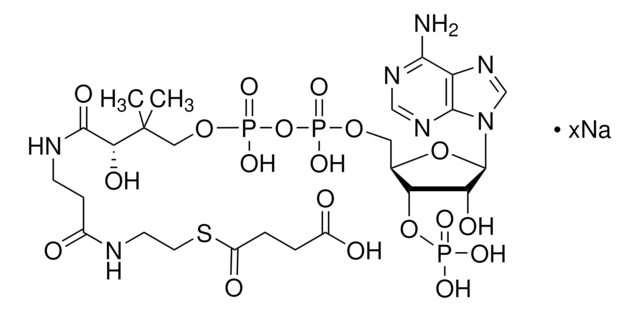Kluczowe dokumenty
A1765
S-Acetyl-coenzyme A synthetase from baker′s yeast (S. cerevisiae)
lyophilized powder, ≥3 units/mg protein
Synonim(y):
Acetate CoA ligase (AMP forming), Acetate thiokinase
About This Item
Polecane produkty
Formularz
lyophilized powder
Poziom jakości
aktywność właściwa
≥3 units/mg protein
skład
Protein, 10-30% biuret
temp. przechowywania
−20°C
Szukasz podobnych produktów? Odwiedź Przewodnik dotyczący porównywania produktów
Zastosowanie
Działania biochem./fizjol.
Opakowanie
Definicja jednostki
Postać fizyczna
Hasło ostrzegawcze
Danger
Zwroty wskazujące rodzaj zagrożenia
Zwroty wskazujące środki ostrożności
Klasyfikacja zagrożeń
Resp. Sens. 1
Kod klasy składowania
11 - Combustible Solids
Klasa zagrożenia wodnego (WGK)
WGK 1
Temperatura zapłonu (°F)
Not applicable
Temperatura zapłonu (°C)
Not applicable
Środki ochrony indywidualnej
Eyeshields, Gloves, type N95 (US)
Wybierz jedną z najnowszych wersji:
Masz już ten produkt?
Dokumenty związane z niedawno zakupionymi produktami zostały zamieszczone w Bibliotece dokumentów.
Klienci oglądali również te produkty
Produkty
Odczynnik enzymatyczny Koenzym A (CoA, CoASH lub HSCoA) jest kluczowym kofaktorem w pierwszym etapie cyklu TCA, odpowiedzialnym za przeniesienie grupy acetylowej z utleniania pirogronianu do szczawiooctanu z wytworzeniem cytrynianu. Dostępny przez Sigma-Aldrich online.
Nasz zespół naukowców ma doświadczenie we wszystkich obszarach badań, w tym w naukach przyrodniczych, materiałoznawstwie, syntezie chemicznej, chromatografii, analityce i wielu innych dziedzinach.
Skontaktuj się z zespołem ds. pomocy technicznej









